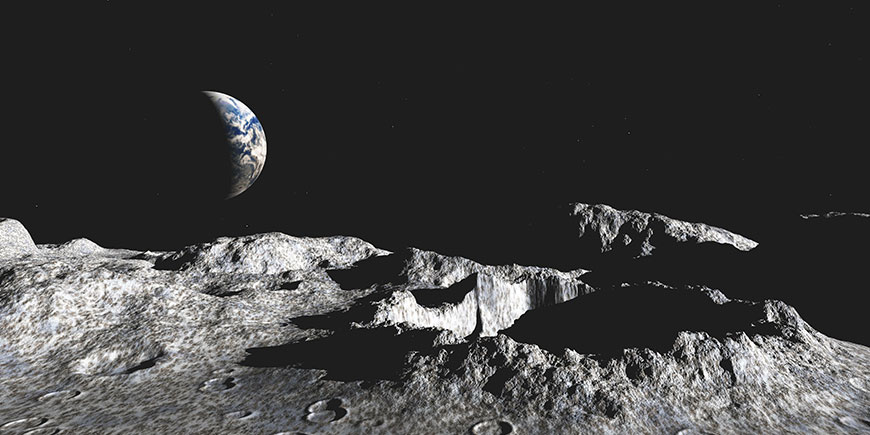New measurements suggest that our satellite may be a fragment of material ejected from the Earth.
by Maura Sandri
Analysis of lunar and terrestrial mineral samples suggests that our satellite may be a fragment of material ejected from the Earth’s mantle, with only a minimal contribution from the protoplanet Theia.
In addition, the results support the idea that water may have reached the Earth at an early stage in its development, rather than as a result of a later impact.
Let’s take a look at the details of this study, published in the Proceedings of the National Academy of Sciences.
An Earth fragment
A team of researchers from the University of Göttingen and the Max Planck Institute for Solar System Research (MPS) has found another piece in the puzzle of the formation of the Moon and the origin of water on Earth.
Until now, the prevailing theory was that the Moon was the result of a collision between the forming Earth and the protoplanet Theia. The new measurements suggest that the Moon was formed from material ejected from the Earth’s mantle, with a minimal contribution from Theia. The results also support the idea that water may have reached Earth early in its development, rather than as a result of later impacts.
Sample analysis
To reach these conclusions, the researchers analysed oxygen isotopes from 14 lunar samples and made 191 measurements on minerals from Earth. Isotopes are variations of the same element that differ only in the mass of their nuclei, i.e. they have the same number of protons but different numbers of neutrons.
The team used an improved version of laser fluorination, a spectroscopic technique based on exciting a molecule with laser radiation and then measuring the fluorescent radiation emitted by the molecule as it returns to its fundamental energy state. In particular, the molecule analysed was oxygen: the new measurements show a very high similarity between Earth and Moon samples of an isotope called oxygen-17 (17O). The isotopic similarity between the Earth and the Moon is a long-standing problem in cosmochemistry, for which the term ‘isotopic crisis’ has been coined.
‘One explanation is that Theia lost its rocky mantle in earlier collisions and then crashed into the early Earth like a metallic cannonball,’ explains Andreas Pack, Director of the Centre for Geosciences at the University of Göttingen and Head of the Department of Geochemistry and Isotopic Geology. ‘If this were the case, Theia would now be part of the Earth’s core and the Moon would have formed from material ejected from the Earth’s mantle. This would explain the similarity in composition between the Earth and the Moon. ‘.

Earth’s water origins
The data also provide an alternative view of the origin of water on Earth: according to a popular hypothesis, water would have arrived on Earth after the Moon formed, through a series of further impacts known as the Late Veneer Event. Since the Earth was hit by these impacts much more frequently than the Moon, there should also be a measurable difference between the oxygen isotopes – depending on the origin of the impacted material.
‘Since the new data show that this is not the case, many types of meteorites can be ruled out as the cause of the late coating,’ explains first author Meike Fischer. ‘Our data can be explained particularly well by a class of meteorites called enstatite chondrites: they are isotopically similar to Earth and contain enough water to be solely responsible for Earth’s water.’


